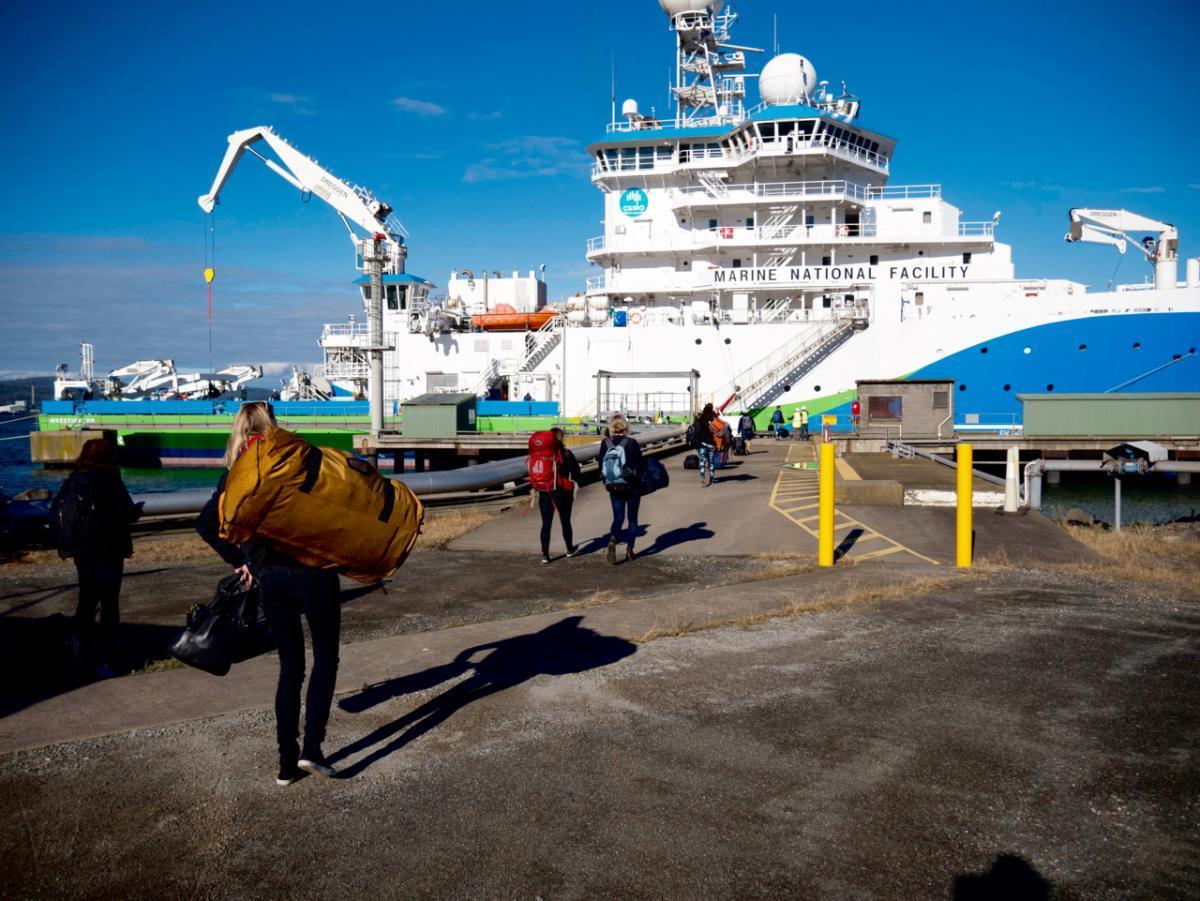May 15, 2017

 An international team of 40 scientists is set to embark on a pioneering voyage to study Australia’s eastern abyss, four kilometres beneath the ocean surface.
An international team of 40 scientists is set to embark on a pioneering voyage to study Australia’s eastern abyss, four kilometres beneath the ocean surface.
The month-long voyage on the Marine National Facility research vessel Investigator begins at Bell Bay on Monday 15 May.
It will visit seven Commonwealth marine reserves (CMRs) – marine parks managed by Parks Australia – from the Freycinet CMR off eastern Tasmania to the Coral Sea CMR off central Queensland.
This is the first exploration of these abyssal areas, (depths of 4000─6000 metres). The voyage team, which includes scientists from 14 Australian and seven international museums and research agencies, expects to discover many new species.
“The abyss is the largest habitat on the planet, covering half the world’s oceans and one third of Australia’s marine territory, but we know very little about it,” voyage leader Dr Tim O’Hara of Museums Victoria says.
“Abyssal animals have been around for at least 40 million years, but until recently only a handful of samples has been collected from Australia’s abyss.
“We’ll be using multibeam sonar to map the structure of the seafloor, and sleds, grabbers, cameras and nets to collect samples of the animals, including trialling what we think is the largest fishing net ever deployed in the abyss.
“The net is fitted with floats that can withstand more than 400 times the pressure at the sea surface, and electronic devices to monitor its position. If all goes well, it will capture a larger volume and diversity of species.”
The scientists expect to catch everything from sea fleas, crabs, shrimps and snails, to anglerfishes, rattails, and sharks.
“It’s a world of jellies and fangs, with miniature monsters gliding up and down waiting for prey,” Dr O’Hara says. “Many animals have no eyes, or produce their own light through bioluminescence.
“We hope to keep some of the specimens alive in onboard aquaria to study how they’re adapted to this dark, frigid environment of crushing pressures and little food.
“We’ll also take videos and photographs, to show Australians what lives deep in their marine reserves, and scan for microscopic pieces of plastic, in the water and on the seafloor, to trace the mark of humans on this remote environment.”
Professor Jerome Mallefet of Belgium’s Catholic University of Louvain is excited about having his first opportunity to work with live abyssal animals, after more than 30 years of researching bioluminescence.
“I am so very excited to participate,” Prof. Mallefet says. “This is a challenge of course, because we don’t know what will come up in the samples.”
Assistant Secretary of the Marine Protected Areas Branch at Parks Australia, Jason Mundy, says many of Australia’s 60 CMRs encompass very deep and remote waters.
“By better understanding these places and the creatures that live there, the voyage will help Parks Australia to manage these important and poorly understood parts of our national marine estate,” he says.
Back at the lab, the forensic work will begin. The scientists will map patterns of biodiversity and evolution across the seafloor, and analyse the chemistry and DNA of tissue samples to reconstruct deep-sea food webs, and links between deep-sea populations.
“What I’m really excited about is mapping the abyss: what patterns are we going to find down there? Are the animals off Tasmania the same as those off Queensland?” Dr O’Hara says.
“Surprisingly for small, slothful, malnourished animals, abyssal critters really seem to get around: some species occur from Russia to Antarctica.
“One theory is that their eggs and larvae can travel great distances. With a bit of yolk to keep them going, fertilised eggs may drift for years in deep-ocean currents, in a sort of suspended animation, until they find exactly the right environment to grow.”
The ‘Sampling the Abyss’ voyage is being led by Museums Victoria, with support from the CSIRO Marine National Facility and the National Environmental Science Programme Marine Biodiversity Hub.
Media kit
https://www.dropbox.com/sh/iluolisp8gqd47a/AAAlZ4MDxsZUsZHHNqGP72_2a?dl=0
Still images (including Tim O’Hara and deep-sea creatures), overlay footage and onboard video interviews with:
- Tim O’Hara, Museums Victoria (voyage leader)
- Jason Mundy, Parks Australia
- Ben Rae, Marine National Facility
- Dan Gledhill, CSIRO Australian National Fish Collection
Media coverage
- Media Release - Museums Victoria leads world-first research voyage to uncover life in Australia's eastern abyss - 17 May 2017
- Deep-sea horror show of 'miniature monsters' awaits Investigator scientists in eastern abyss - ABC, 14 May 2017
- Scientists to journey into unknown ocean depths off southern coast of Australia - ABC, 12 May 2017
- Sampling the Abyss – a voyage into a world of jelly and fangs! - CSIRO blog, 16 May 2017
- Australian scientists went looking for deep sea creatures and pulled up your nightmares instead - The Washington Post, 20 June 2017
- Sludge, snags, and surreal animals: life aboard a voyage to study the abyss - The Conversation, 26 June 2017
- Log in to post comments
